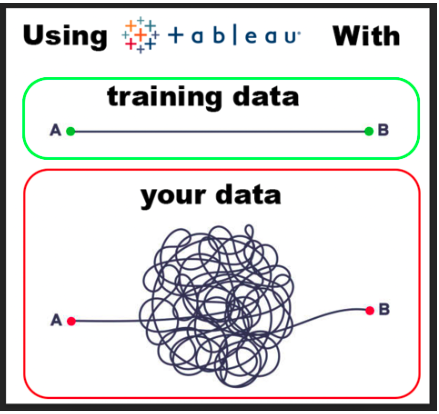When Training Data Just Isn’t Enough

Written by Heather Ditillo
I loved being a road warrior, traveling the country teaching Tableau and helping my students gain the confidence to be less intimidated by the technology and the skills they needed to better see and understand their data. When travel was curtailed in 2020 I started doing more consulting work with clients on their data projects in addition to teaching Tableau training courses virtually. And let me tell you, it was humbling to say the least, when our client’s real world data didn’t play by the same rules as the training data. I started to realize that training data is actually a fairy tale: clean, columnar and ready-to-go, but real world data is messy – really messy.
Learning Tableau using training data gets the job done for a certification program, but leveraging Tableau using real world data is a horse of a different color, as folks in The Wizard of Oz might say.
Often, when newly-trained students are tasked with their first data visualization project, they can have that “Toto, I don’t think we’re in Kansas anymore.” feeling (or sometimes flat out panic).
At Boulder Insight, we’ve discovered that students achieve greater understanding and proficiency in Tableau faster when we bridge the gap from training data to using their organization’s own data, messy as it may be.
Our most successful Tableau Training clients/students are the ones that have us to use their data in one of two ways (both are ideal):
1. By adding coaching sessions using their own projects and data to navigate the “ummm…this isn’t working like it did in training” situations;
2. Having us create a custom curriculum using a mock data set (with dimensions and measures like their company’s data). This further helps them gain practical proficiency and supports them on their path to certification.
We aspire to transform people into Tableau Superstars. As much as teaching, we focus on coaching: acting as a guide who helps people leverage their data to show the best strategic path forward, even after their classes end.
It’s as simple as this: training data has its place, but true mastery comes when you can apply those lessons to your own data.
Ultimately, people dive into data visualization initiatives to help their organizations make better decisions, faster. That’s the real value gained from using data they’re familiar with to get the expertise they need to let their data superpowers shine bright.